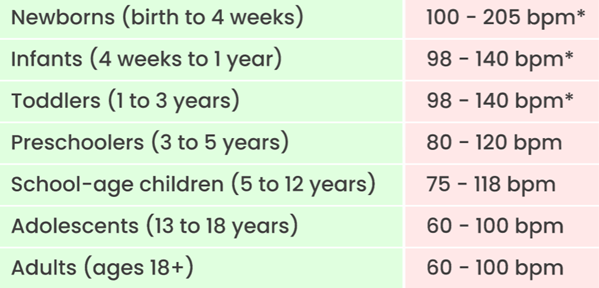You may also like…
Pulse : How to Measure, Where & Why ?
You can easily detect your pulse by following these points (using your index and ring fingers together without applying excessive pressure):
Neck (carotid artery): Commence at your earlobe and trace your fingers straight down along your skin. Just beneath your jawbone, you should readily feel your pulse.
Wrist (radial artery): Hold your hand with your palm facing upward. Locate this point where the fleshy part of your thumb merges into your wrist.
How do I use my pulse to measure my heart rate ?
Once you've located your pulse, typically found most easily at your neck or wrist, you can determine your pulse rate by tallying the number of heartbeats in 60 seconds. If you seek a quicker answer, a touch of math can expedite the process. Here are the simplest methods:
- Count heartbeats for 10 seconds: After 10 seconds have elapsed, multiply the count by six.
- Count heartbeats for 15 seconds: After 15 seconds have passed, multiply the count by four.
- Count heartbeats for 30 seconds: After 30 seconds have transpired, double the count.
The outcome obtained through any of these three techniques represents your "beats per minute," denoted as "bpm," which is your heart rate. You can gauge your resting heart rate if you determine your heart rate while at rest. Alternatively, you can measure it during or immediately after exercise, which serves as a crucial means of assessing whether your exercise intensity is too low, too high, or just right.
Should I be able to hear my pulse in my ears?
In certain instances, it's possible to audibly perceive your own pulse within your ears, a phenomenon referred to as pulsatile tinnitus. This auditory sensation may occur, for instance, when you rest your head on your arm or hand. It's important to note that this sound should typically dissipate upon altering your position. However, if you continue to hear your pulse in your ears even after changing position, it is advisable to contact your healthcare provider for further evaluation.
What Heart Rate Should I Expect to have?
Your resting heart rate is influenced by your age and overall health. Generally, younger individuals tend to have higher resting heart rates. Here are the anticipated resting heart rate ranges for different age groups:
Please note that the rates marked with an asterisk (*) are for children while they are awake; these rates are likely lower during sleep.
What if my resting heart rate isn’t in the normal range?
When your resting heart rate deviates from these established ranges, whether exceeding the upper limit or falling below the lower limit, it could signal an underlying issue. Here are the two primary deviations:
Tachycardia: This condition manifests when your resting heart rate exceeds 100 bpm, representing an abnormally high rate.
Bradycardia: Conversely, bradycardia occurs when your resting heart rate falls below 60 bpm, indicating an unusually low rate.
It's crucial to note that exceptionally physically active individuals, such as competitive athletes, may naturally exhibit resting heart rates below 60 beats per minute. However, for the average person, this level would be considered dangerously low.




